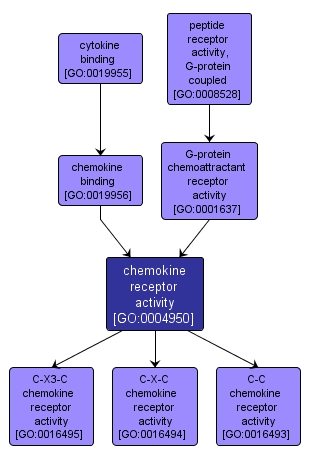GO TERM SUMMARY
|
| Name: |
chemokine receptor activity |
| Acc: |
GO:0004950 |
| Aspect: |
Molecular Function |
| Desc: |
Combining with chemokines, small chemoattractant molecules normally used to stimulate leukocytes, to initiate a change in cell activity. |
|

|
INTERACTIVE GO GRAPH
|














